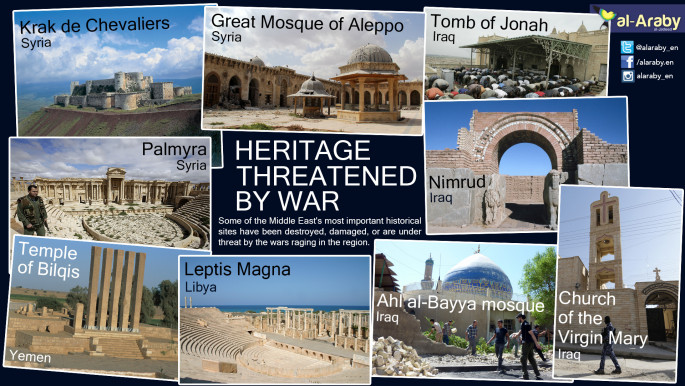At least 40 bodies found in Palmyra mass grave
"The Syrian army... uncovered a mass grave of officers, soldiers, members of the popular committees and their relatives," a military source told AFP, adding that 24 of the victims were civilians.
The Damascus regime recaptured the famed ancient city of Palmyra from IS last Sunday in a major symbolic and strategic victory over the militants.
The group, whose takeover of the ancient ruins, locally known as Tadmur, raised global concern, had taken over the citadel on May 23 last year and raised its notorious black flag above it.
IS has since blown up UNESCO-listed temples and looted relics that date back thousands of years, after murdering the former antiquities chief in Palmyra, Khaled al-Assaad.
News of Palmyra's recapture by Syrian regime forces was met with some public acclaim, particularly among western archaeologists and antiquities experts in view of the destruction of the UNESCO heritage site by the militants.
However, opposition activists strongly criticised one-sided celebrations particularly in view of one of Palmyra's most notorious sites - the Tadmur prison, believed to be the home of more than 20,000 Syrian political prisoners between 1980 and 1990, and hundreds in the decades thereafter.
The prison is reported to have been the site of a mass execution of more than 600 Muslim Brotherhood opposition members in 1980, in the immediate aftermath of a failed assassination attempt against then Syrian president Hafez al-Assad.
Syrian president Bashar al-Assad, Hafez's son, hailed the victory as "important" and offered "fresh proof of the efficiency of the Syrian army and its allies in fighting terrorism".
The opposition Syrian Coalition was more critical, stating that the Assad regime had allowed the IS group to expand and flourish in Syria in the first place.
 |





 Follow the Middle East's top stories in English at The New Arab on Google News
Follow the Middle East's top stories in English at The New Arab on Google News
![Israeli forces ordered bombed Gaza's Jabalia, ordering residents to leave [Getty]](/sites/default/files/styles/image_330x185/public/2176418030.jpeg?h=a5f2f23a&itok=_YGZaP1z)

